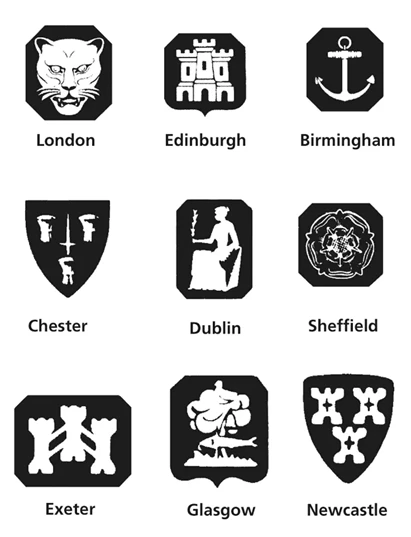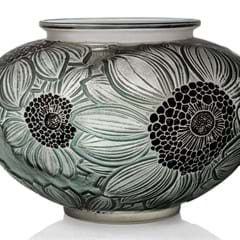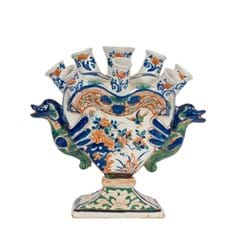The buyer's guide to silver hallmarks
When buying silver at auction it’s important to look for an item’s hallmarks. These silver hallmarks indicate the purity of the precious metal and often identify the date and location where the item was originally stamped or 'assayed'.Nine silver hallmarks of different assay offices in the UK and Ireland, some of which have now closed.
Also keep an eye out for a maker’s mark to show who produced it.
The system of silver hallmarking in the UK has been in existence for a long time. It dates back to Edward I (1272-1307) who first passed a statute requiring all silver to be of sterling standard – a purity of 925 parts per thousand.
Historically the standard mark for sterling (.925 purity) silver in Britain has been a lion passant – a walking lion with the right fore paw raised – and this will be found on the majority of pieces made in the UK.
Assay offices
Typically a silver item will also carry assay marks showing where and when it was tested.
The first silver hallmarking was carried out by Goldsmiths’ Hall in London but in time other assay offices were opened. While a number of assay offices have closed over the years – like Norwich, York, Chester and Glasgow – today there are still offices in London, Edinburgh, where hallmarking has been regulated since the 15th century, and in Birmingham and Sheffield, where assay offices were established by an Act of Parliament in 1773.
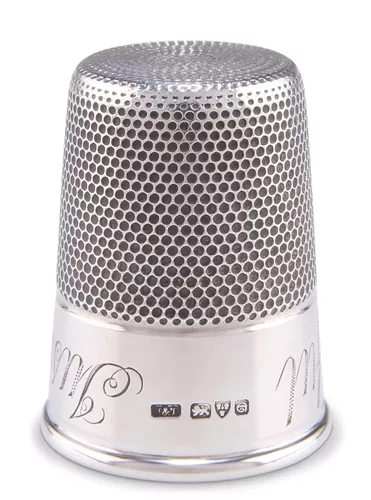
This Edwardian shot cup in the form of a thimble, sold for £120 at Elstob & Elstob in Ripon in July 2022, has marks for Pearce & Thompson, Chester 1904.
Dublin’s assay office has been operating since the middle of the 17th century and silver is still marked there.
Since hallmarking began, the leopard’s head has been used in various forms to denote the London Assay Office. The Edinburgh mark is a three-turreted castle (to which a thistle was added from 1759 until 1975 when a lion rampant replace the thistle).
The mark for Sheffield was a crown until 1974 when it was replaced by a rosette, while the symbol for silver assayed in Birmingham is an anchor.
The date when it was stamped is normally indicated by a separate letter mark – each assay office issues a new letter for each year.
Generally the letter was changed annually until a complete alphabet had been used and then the cycle would begin again with an alteration to the style of letter or its surrounding shield.
Maker’s marks
Many pieces of silver also carry the initials of the maker or a unique mark that the maker has registered with the assay office
Specialist publications help explain different makers’ or sponsors’ marks, with Sir Charles Jackson’s English Goldsmiths and their Marks, first published in 1905 and revised in 1989, still the most authoritative work on the subject.
The inclusion of these stamps alongside the hallmarks means that most makers can also be identified.
Further marks
Other marks that may be found on English silver items include duty marks and commemorative marks. Silver from other countries may also carry different marks indicating the nation of origin.
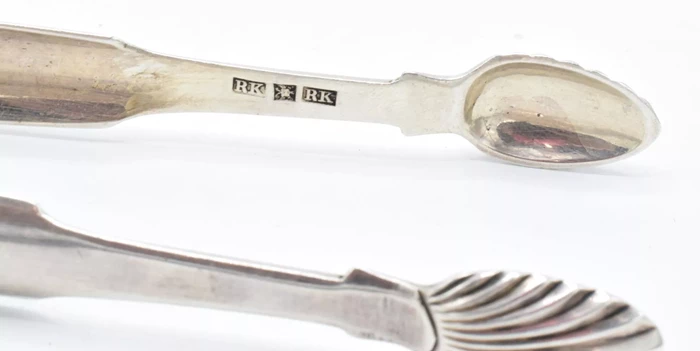
A pair of sugar tongs by Robert Keay of Perth sold for £50 at Leighton Hall, Alton, Staffordshire in March 2022. Scottish provincial silver typically lacks the assay mark and the date letter.
What to do next
Once you’re ready to start searching for silver items, decide how much you’d like to spend and use the search facility on thesaleroom.com to find pieces coming up for sale. You can filter your search by, among other things, price and by location of the auction house to narrow down your selection.
To research recent prices at auction to see how much different silver items sold for you can also try out the Price Guide.
If you are new to bidding check out our guides to buying at auction – it’s easy once you know how.
To read more about hallmarks, visit Antiques Trade Gazette’s website and view the silver hallmarks guide which includes a selection of PDFs that can be downloaded to help you identify silver hallmarks.
